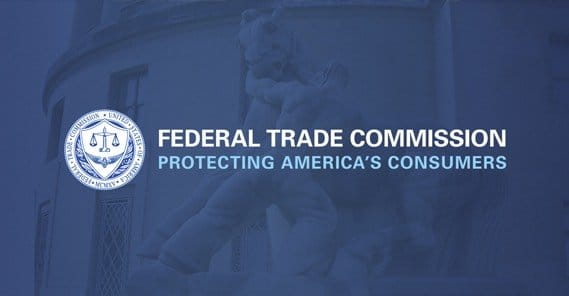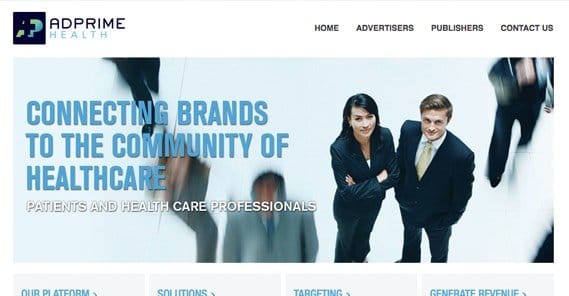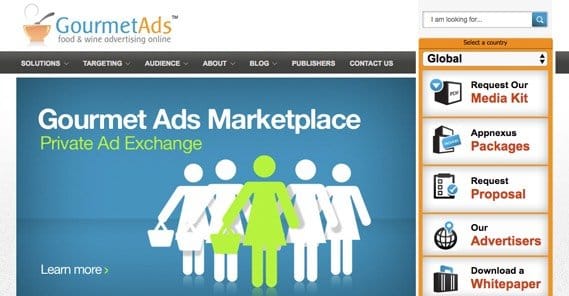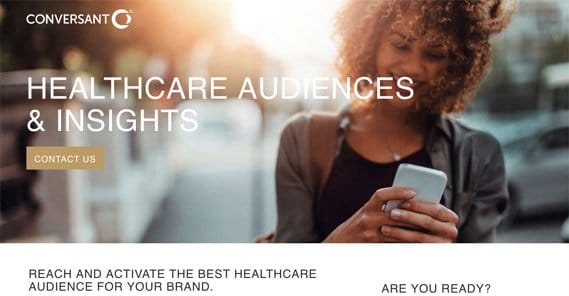5 Advertising Networks that Allow Supplement Businesses

Dietary supplements, as well as pharmaceuticals and other medicine-adjacent products, are tricky to advertise online. It’s not so simple as just finding the right ad network that will take your business. It’s almost as bad as gambling, which we covered here.
The Perils of Snake Oil
The concept of “snake oil” comes from old Chinese medicine and folklore, from the early 1700s. The idea was that a liniment containing an extract from snakes could be used to alleviate some pains, like arthritis and bursitis.
And, indeed, actual snake oil could do this. The Chinese water snake oil contains a compound that has analgetic and anti-inflammatory properties. The problem was, the “snake oil” marketed and given to workers around that time contained no actual snake extract. It was ridiculed and mocked by various druggists and chemists at the time, and eventually common use transformed the phrase snake oil into the charged phrase we have today.
Snake oil is the not the first false medicine in history, nor will it be the last. Even today, we have a wide range of fraudulent and potentially fraudulent products aimed at gullible people seeking cheaper alternatives to medical treatment. Ever heard of Black Salve? It’s a “cure” for skin cancer that just rots off that part of your flesh. Or what about HeadOn, which you apply directly to the forehead for headaches, and is essentially nothing more than a stick of wax?
In an effort to combat charlatans and frauds, a lot of effort has been put forth over the years to establish laws and regulations on the advertisement of various health-affecting products. In the US, where most of you are advertising, the Food and Drug Administration and the Federal Trade Commission have a lot to say about it.
You do have to pay attention to these rules when you advertise anything health or supplement related, but for the most part the onus is on the manufacturer. As long as you’re getting your products from a reputable manufacturer – and not weird Chinese research chemicals or something – you should be safe as far as most of the rules and regulations are concerned.
Even so, if you’re trying to market any kind of supplement, I highly recommend browsing through the rules and the advertising guide that the FTC publishes. You can find it published on the web here, with a PDF at the top to download and peruse at a later date.
How Ad Networks Handle Supplements
You can see, though, why ad networks might be a little nervous to accept supplements. Even AdWords, one of the more open – with permission – ad networks out there, has a lot of regulations. Here’s a quick rundown.
Actual pharmaceuticals can be promoted only by manufacturers or by authorized sellers – think CVS, not an online-only shop – and only in certain countries. For example, prescription drugs can only be promoted in Canada, New Zealand, and the United States. Over the counter medications are a little more permissive, with a list of other countries available, including Australia, Japan, Mexico, Brazil, China, France, Germany, and more.
Even if you’re allowed to advertise prescription drugs, you can’t use drug terms in your ads or landing pages. Only certain businesses – typically the manufacturers or the main stores like CVS or Rite Aid – are allowed to use them. More importantly, those businesses need to apply for permission directly with AdWords. You can read more on the page up above. The “how to apply” link is on several places on the page.
That said, there is a huge list of things you cannot advertise, with or without manufacturer permission. Google maintains a list of dozens of straight-up banned products, as well as blanket bans on anything containing ephedra and anything considered an anabolic steroid. You can read the full list here, but be aware that Google reserves the right to add anything to the list at any time. If they decide a product is too close to fraud or snake oil, they will add it to their list without hesitation.
So, consider this a free sixth ad network, I guess? AdWords can allow you to promote supplements, but in order to do so you either need to slip through the cracks or you need prior permission directly from Google. Here are five other ad networks you can try, if you don’t want to jump through those hoops.
1. Adprime Health
Adprime Health is a health-focused vertical of the larger Adprime Media advertising division. This particular vertical reaches over 70 million people across over a thousand different websites in the health niche. Every site in their network is verified and vetted before being allowed to be a publisher, and then a second wave of verification scans the sites occasionally to make sure they’re still appropriately delivering ads. Since Health can be a fraud-ridden vertical, this is a thick layer of security.
As far as the actual ad placement goes, you have a fairly standard array of banners, sidebars, and boxes. You also have access to promoted space in email newsletters, as well as custom media options. Mobile ads and video ads are available as well. Targeting can break down by geographic location as close as city or zip code, by purchase intent, based on scripts, through using data from healthcare providers, through basic demographics, through content access, and with retargeting for all of the above.
Categories range far and wide. You have categories like sports, beauty, fitness, cooking, nutrition, pet health, seniors, weight loss, and parenting. You also have categories like allergies, cancer, diabetes, heart disease, skin conditions, sleeping disorders, and other specific medical conditions you can use to target your supplements. On top of that, there are categories where you can reach people researching specific healthcare specialties, like dermatologists, cardiologists, nephrologists, oncologists, urologists, and other various ologists you might come across.
I have seen some reports that they have trouble paying publishers on time, though this may have minimal impact on the advertiser side of things. Publishers include sites like About.com, MedHelp, DailyRX, and Mothering.
2. GourmetAds / HealthyAds
GourmetAds and HealthyAds are two sides of the same coin. GourmetAds is the advertiser side of things, while HealthyAds is the publisher face. If you want to run ads on your website, go to HealthyAds. If you want to be the one paying for ad placement, Gourmet is the way.
This ad network is largely focused on the health and food vertical. This means it’s ideal for businesses that have health supplements, vitamins, health foods, some weight loss products, and some other supplements. You can expect to have ads show up on sides like Vegetarian Times, the Yoga Journal, and EatingRules.
The network has a very tight level of quality control for ad approval, though they have comparatively lax rules for the sites and businesses they let in. This is to ensure as much congruence between the message on a publisher site and the advertising being displayed. After all, you don’t want weight loss pills to be advertised right next to a piece of content about how all weight loss pills are a scam, right?
GourmetAds is used by many big brands, including Nestle, Kraft, General Mills, and Campbell’s. This does mean that if you’re in direct competition with one of these brands for a niche, you’re going to have a hard time paying a reasonable amount of money. On the other hand, most of these companies don’t produce much in the way of supplements, preferring to stick to their food brands, so there’s open space in the network.
3. eHealthcareSolutions
Boasting 46.5 million unique monthly visitors and 6.5 million daily pageviews, EHS is a healthcare and pharmaceutical specialist advertising network. They don’t have thousands of sites, but they have highly vetted the sites that go into their network, with the likes of Drugs.com, EmpowHER, MedHelp, and Psychology Today on the roster.
On the advertising side of things, you have a lot of unique technology that EHS has developed themselves. In particular, they use a unique form of geographical and medical combination targeting that helps put relevant medication advertising in front of the people who actually need it. They also have a custom medical-focused contextual content analysis engine, to try to make sure specific pieces of content have congruent advertising displayed. They have mobile messaging and in-app advertising as well as traditional web advertising.
From the publisher side of things, EHS is a nearly impenetrable wall. They require some extreme vetting of their partner sites, since they run a proprietary and limited exchange, not a resale of an existing network. As they say, “only the most respected healthcare publisher, medical societies, journals, and associations are represented, and only the most trusted brands are invited to participate.” This makes it pretty tough to get a new site or a gray market site added to the network.
4. AdClick Media
AdClick Media is one of the larger broad-category networks. They’ll accept a wide range of different categories, ranging from dating to automotive, from health to golf.
Publishers using AdClick Media are able to use photo text ads, banner and display ads, full page interstitials, email advertising, and a few variations on those formats. They do have requirements for each, though. For example, email advertising requires a list that is targeted to a specific audience, rather than a general interest list. The list has to be opt-in, not spam, and must have at least 200 characters of content normally. In fact, they require a phone conversation to vet mailing lists, simply because email is so easy to be blacklisted.
One of the primary benefits of this network for advertisers is the fraud prevention. They have a setup with their publishers to report participation and ad performance, as well as various traffic counts and statistics that can point to various common methods of ad fraud. They monitor ad clicks with algorithms and with spot checks by their tema manually, and email messages have another layer of approval built in.
5. Conversant
I was going to recommend AdRX Media here, but they were acquired by Conversant, much like CJ Affiliate and a bunch of other media brands. They rolled it into their larger ad network, and now it’s just the health-focused vertical.
Interestingly, they have a lot of unique forms of verification for their target audiences, including UPC purchase history, consumption of health-related content, and household demographics. Everything is explicitly free of personally identifiable information, which helps keep you free and clear when the health laws come into play.
Perhaps the best feature for advertisers, though, is the 99% human guarantee. They have some pretty detailed filtering that ensures that the majority of the traffic your ads get comes from humans.
6. 7Search
I’m putting this one as a sixth on a list of five because it’s one of the most commonly mentioned ad networks that works with all ranges of medical, health, supplements, and other forms of filtered content. The primary reason, which you can see if you visit their site, is that they shut down. They have been working through processing final payments, but as of July 31st of 2017, they ceased accepting new advertisers or publishers and have been slowly killing off their platform. It’s disheartening to know that one of the larger, older ad networks has died, but such is the way of brands online. You never know when profitability simply ceases to sustain a platform.
 ContentPowered.com
ContentPowered.com











